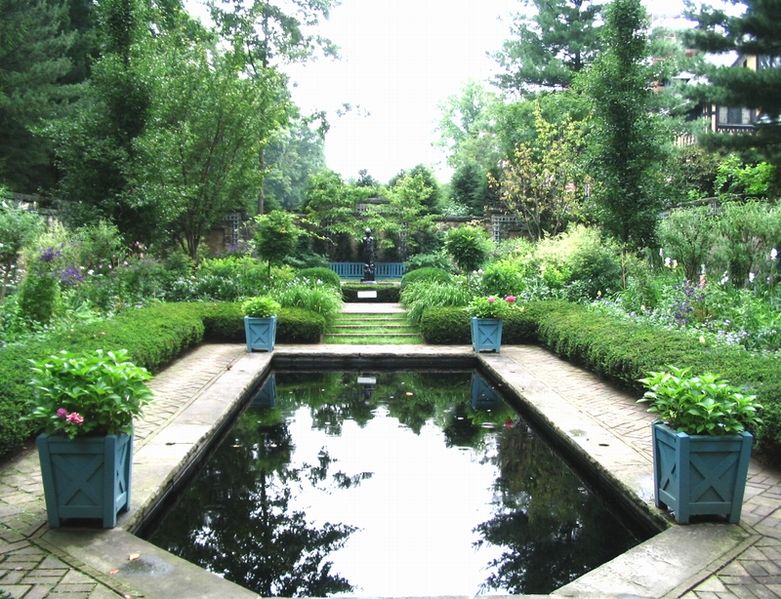Dates of Birth and Death
1869-1950Birthplace
Philadelphia, PennsylvaniaEducation
- Radcliffe (nongraduate)
- Cornish Art Colony
Years of practice
1910–1950 (estimated)Affiliations/Firms
- Independent Landscape Architect
Location of architect’s archive
Cornell UniversityKeywords
Louisiana, New York, North Carolina, landscapeBiography
Ellen Biddle Shipman (1869-1950) was an American landscape architect known for her formal gardens and lush planting style.
Born in Philadelphia, she spent her childhood in Texas and the Arizona territory. Her father, Colonel James Biddle, was a career Army officer, stationed on the western frontier. When the safety of his family was threatened, he had them move to the McGowan farm inElizabeth, New Jersey.
Education
She attended boarding school in Baltimore, Maryland, where her interests in the arts emerged in her daydreams and doodles in her notebook. By her twenties she had already started drawing garden designs.
When she halfheartedly entered the Harvard annex, Radcliffe College, Shipman became distracted by a playwright attending Harvard named Louis Shipman. They left school after one year, married, and moved to Plainfield, New Hampshire, attracted by the nearby Cornish Art Colony, which included Maxfield Parrish and Augustus Saint-Gaudens.
The colony is said to have been landscaped by artists who were not by any means landscape architects. However, through their artistically trained eyes and awareness for an aesthetics of repose, they built gardens based on the simple geometrical shapes of the colonial garden. This was the style that Shipman took strongly to and with it created her own style – a style which did not go unnoticed.

Collaboration
Shipman’s colleague, Charles A. Platt, was an artist and architect known for his book about Italian gardens. Platt recognized Shipman’s talents. He did not know much about horticulture, but was highly respected and thought of as “the man who could design both house and garden for a country estate”, for he had recently made a trip to Italy and wrote a book about the gardens there.
When the Shipmans divorced in 1910, Ellen Shipman, with the help of Platt, was well on her way to establishing herself as a talented garden designer nationwide. She and Platt played off their mutual requirements: Platt needed Ellen for her knowledge of horticulture and Ellen needed Platt for his knowledge of drafting and design. Shipman was also heavily influenced by Gertrude Jekyll‘s brilliant use of borders, as well as her own memories of her grandparents’ farm. By 1920 she was completely independent, though she continued to collaborate with Platt on his residential projects.
Among the earliest collaborations with Platt, in 1913, was the Cooperstown, New York estate of Fynmere, owned by the Cooper family on the edge of the village. This project, for descendants of William Cooper and his son, the famed novelist James Fenimore Cooper, provided significant visibility for Shipman. While the stone mansion was demolished in 1979, a few elements of the landscape work survive. The Cooper family was impressed enough to award her the landscape work for the adjoining estate of Heathcote, which is extant today in private hands. Her other gardens include Bayou Bend Gardens, Longue Vue Gardens in New Orleans, Stan Hywet Gardens, the Graycliff Estate (now under restoration), Stranahan Estate (also under reconstruction), and Duke University‘s Sarah P. Duke Gardens, often named one of her finest works. The courtyard gardens of Manhattan’s Astor Court Building were another Pratt/Shipman collaboration.[1]
Shipman created her own residential gardens all over the United States, collaborating with many architects. Her planting plans softened the bones of geometric architecture with planting designs that were muscular enough to speak for themselves. She once said, “Remember that the design of your place is its skeleton upon which you will later plant to make your picture. Keep that skeleton as simple as possible.”
Public recognition and solo work
Shipman’s gardens often appeared in magazines, including House Beautiful. In 1933, House & Garden named her the “Dean of Women Landscape Architects”. She lectured widely, and completed over 400 projects. Her archives are at Cornell University. Because much of her work includes labor-intensive plantings and borders, many have not survived. However, it was because of these borders that she was able to connect with her female clientele. Her intent was to provide privacy and a place for interaction with the surroundings. Women found the gardens provided familiarity and comfort when life was otherwise too chaotic.
It is said that throughout the 40 years she practiced landscape architecture, Shipman would only hire graduates from Lowthorpe School of Landscape Architecture, Gardening, and Horticulture for Women. Although it is not thoroughly understood why this was her hiring practice, it is widely believed that because of the time, women were not being given apprenticeships in male offices.